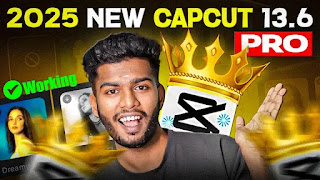BIKE POSTER DESIGN PHOTO EDITING
BIKE POSTER DESIGN PHOTO EDITING
WATCH TUTORIAL FULL VIDEO ON YOUTUBE 👇
2. Essential Mobile Photo Editing Apps
If you’re serious about creating amazing bike posters and polished photos, these apps should be in your toolkit:a) PicsArtBest for: Creative poster design, overlays, stickers.Why: Its powerful editing tools, customizable templates, and layering options make it ideal for bike poster projects.b) SnapseedBest for: Professional-level photo correction.Why: Offers advanced tools like selective adjustment, healing brush, and HDR enhancement.c) Lightroom MobileBest for: Color grading and tone adjustments.Why: Gives you precise control over lighting, exposure, and color balance.d) CanvaBest for: Quick poster layouts.Why: Thousands of ready-made templates perfect for bike events, ads, or personal branding.e) CapCutBest for: Video posters and motion designs.Why: Adds motion graphics and animations to bring bike posters to life.
3. The Basics of Mobile Photo Editing
Before diving into complex poster designs, you need to master the foundations of editing:
Step 1: Crop and Frame
-
Always crop your image to the right aspect ratio (Instagram: 4:5, Posters: 2:3, Facebook Cover: 16:9).
-
Use the “Rule of Thirds” grid to position your bike for maximum impact.
Step 2: Adjust Lighting and Exposure
-
Increase brightness for daylight shots.
-
Reduce highlights for harsh sunlight.
-
Boost shadows to reveal hidden details.
Step 3: Enhance Colors
-
Use saturation carefully—overdoing it can make images look fake.
-
Experiment with warmth and tint for mood changes (cool tones for speed, warm tones for nostalgia).
Step 4: Sharpen and Detail
-
Increase sharpness to bring out textures in bike parts like metal and tires.
-
Use “structure” or “clarity” tools to make the bike pop against the background.
4. Bike Poster Design: Blending Photography and Art
Designing a bike poster is more than just editing a photo—it’s about storytelling through visuals. A good bike poster captures speed, style, and personality.
Key Elements of a Bike Poster:
-
High-Quality Bike Photo – The star of the design.
-
Bold Typography – Event name, brand, or slogan.
-
Dynamic Backgrounds – Motion blurs, gradients, or textured overlays.
-
Color Harmony – Match poster colors with the bike’s theme.
-
Branding Elements – Logos, watermarks, or event sponsors.
5. Step-by-Step: Creating a Bike Poster on Mobile
Here’s a practical workflow you can follow on apps like PicsArt or Canva:
Step 1: Select Your Base Image
-
Use a sharp, well-lit photo of your bike. Avoid blurred or pixelated shots.
Step 2: Remove the Background
-
Use “Remove BG” tools in PicsArt or Canva to isolate the bike.
-
This allows for flexible placement on creative backgrounds.
Step 3: Choose a Background
-
For racing posters: Use blurred racetrack images.
-
For lifestyle posters: Use scenic landscapes.
-
For urban themes: Use street textures or neon lights.
Step 4: Add Text and Typography
-
Choose fonts that match the bike’s style (sleek fonts for sports bikes, bold fonts for cruisers).
-
Use contrasting colors so text is readable against the background.
Step 5: Apply Effects and Filters
-
Motion blur for speed effects.
-
Gradient overlays for depth.
-
Lens flares for dramatic lighting.
Step 6: Final Adjustments
-
Adjust overall brightness and contrast.
-
Check alignment and spacing for balance.
-
Export in high resolution for printing or online posting.
6. Professional Tips for Mobile Bike Poster Editing
✅ Shoot in Good Lighting – Natural light gives the best starting point for editing.
✅ Keep It Minimal – Don’t overcrowd your design with too many effects or text.
✅ Match the Mood – Editing style should match the bike’s personality (e.g., aggressive edits for sports bikes, vintage tones for classics).
✅ Use Layers – This gives more flexibility in adjusting elements individually.
✅ Test Different Formats – Square for Instagram feed, vertical for stories, landscape for banners.
7. Common Mistakes to Avoid
8. The Future of Mobile Photo Editing
With AI-powered tools becoming more advanced, future mobile editing will allow:
-
One-Tap Poster Designs – Instant templates that match your bike’s photo.
-
Realistic 3D Effects – Turning 2D bike shots into dynamic 3D visuals.
-
Automated Background Replacement – AI selecting perfect backdrops automatically.
These advancements will make professional-quality bike posters even more accessible.
Conclusion
Mobile photo editing has transformed the creative process, empowering bike lovers, photographers, and designers to produce professional-quality work without expensive gear. By combining the right apps, a solid editing workflow, and a good eye for design, you can create stunning bike posters that capture the thrill, beauty, and personality of your ride








